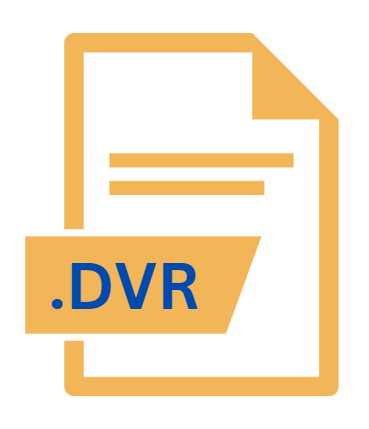.DVR File Extension

Microsoft Recorded TV Show
| Developer | Microsoft |
| Popularity | |
| Category | Video Files |
| Format | .DVR |
| Cross Platform | Update Soon |
What is an DVR file?
The .DVR file extension, specifically associated with Microsoft Recorded TV Show files, is a format used to store television recordings.
These files are most commonly created and utilized by Windows Media Center, a digital video recorder (DVR) application that was bundled with certain editions of Microsoft Windows.
The .DVR files contain recorded television programs, allowing users to watch live TV, schedule recordings, and manage their TV content directly from their computers.
More Information.
The history of the .DVR file is tightly interwoven with the evolution of digital video recording technology. Before the advent of DVR, television recording was predominantly done through analog methods, such as using VHS tapes.
The development of DVR technology, including TiVo and similar devices, revolutionized this by allowing users to record TV shows digitally, pause live TV, and more.
Microsoft’s entry into the DVR space with Windows Media Center brought these capabilities to personal computers.
The .DVR file format was designed to efficiently store high-quality video data while supporting features like time-shifting (pausing live TV) and storing metadata, such as program details and recording schedules.
Origin Of This File.
The .DVR file extension emerged with the development of Microsoft Windows Media Center, first introduced in Windows XP Media Center Edition (MCE) in 2002.
This was part of Microsoft’s initiative to integrate multimedia capabilities directly into the operating system, aiming to turn personal computers into home entertainment hubs.
The Media Center’s ability to record and playback television shows required a specialized file format, leading to the creation of the .DVR format.
File Structure Technical Specification.
The .DVR file is primarily a container format, meaning it can encapsulate various types of data streams, including video, audio, and metadata. Here’s a breakdown of its components:
- Video Stream: The video in a .DVR file is typically encoded using the MPEG-2 format, a standard for digital video compression that balances quality and file size. This format is widely supported and ensures that the video data can be efficiently processed and played back.
- Audio Stream: The audio within a .DVR file is usually encoded in MPEG-1 Layer II or Dolby Digital AC-3 format, which are both standard audio formats for television broadcasts.
- Metadata: .DVR files contain metadata that includes details about the recorded program, such as the title, description, channel, broadcast time, and recording duration. This metadata is crucial for organizing and managing recorded TV shows within the Media Center interface.
- Time-shifting Data: One of the notable features of .DVR files is their support for time-shifting, which allows users to pause, rewind, or fast-forward live TV. This functionality is enabled by a temporary buffer stored in the .DVR file.
- Indexing: The file format also includes indexing information, which allows for quick navigation within the video stream. This is essential for functionalities like skipping to a specific part of the recording or resuming playback from where it was last stopped.
How to Convert the File?
Converting .DVR files to more widely supported formats, such as MP4 or AVI, is often necessary for easier playback and sharing. The process typically involves using video conversion software that can read the .DVR format and re-encode the video into a different format.
Steps to Convert .DVR Files:
- Choose a Conversion Tool: Software such as HandBrake, Any Video Converter, or proprietary DVR software often supports .DVR file conversion.
- Import the .DVR File: Open the .DVR file in the conversion software.
- Select Output Format: Choose the desired output format (e.g., MP4, AVI).
- Adjust Settings: Configure any additional settings such as resolution, bitrate, and audio options.
- Convert: Start the conversion process. The time required will depend on the file size and system performance.
- Save the Converted File: Once the conversion is complete, save the new file to your desired location.
Advantages And Disadvantages.
Advantages:
- Integrated Experience: The .DVR format is deeply integrated with Windows Media Center, providing a seamless experience for recording, managing, and playing back TV shows.
- Time-shifting Support: The ability to pause, rewind, and fast-forward live TV is a significant advantage, offering flexibility to viewers.
- Metadata Management: The inclusion of detailed metadata allows for easy organization and retrieval of recorded content.
- Compatibility with Media Center: As a native format for Windows Media Center, .DVR files are fully supported without the need for additional codecs or software.
Disadvantages:
- Limited Software Support: Outside of Windows Media Center, support for .DVR files is limited. Many media players and editing software do not natively support this format, requiring conversion to more common formats.
- Large File Size: The use of MPEG-2 for video compression, while offering good quality, results in relatively large file sizes compared to more modern codecs like H.264 or H.265.
- Obsolescence: With the discontinuation of Windows Media Center in Windows 10, the .DVR format has become less relevant, with fewer tools available to work with these files.
How to Open DVR?
Open In Windows
- Windows Media Center: On systems with Windows Media Center (such as Windows XP MCE, Vista, or 7), .DVR files can be opened directly by double-clicking them.
- VLC Media Player: VLC is a versatile media player that can handle .DVR files, although it may require additional codecs or configuration for optimal playback.
Open In Linux
- VLC Media Player: On Linux, VLC remains the best option for opening .DVR files.
- FFmpeg: For advanced users, FFmpeg can be used to both open and convert .DVR files from the command line.
Open In MAC
- VLC Media Player: Mac users can open .DVR files using VLC Media Player. However, playback might not be as seamless as on Windows.
- HandBrake: While primarily used for conversion, HandBrake can also open .DVR files for preview purposes.












